
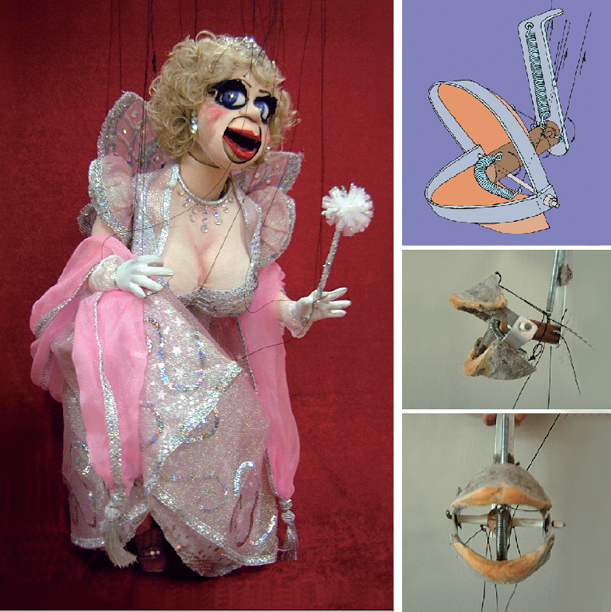
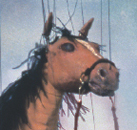
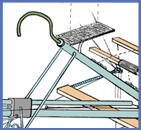

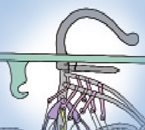
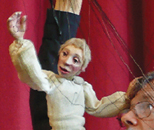
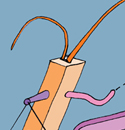

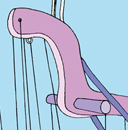

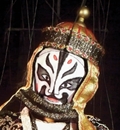
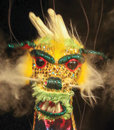
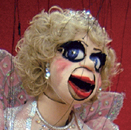
Marionettes, also called "string puppets" because they are manipulated by strings connecting them to a control held above them, marionettes are a very popular form of puppetry, with a very long history.
For Figures in the Fourth Dimension, I chose two of the world's most renowned marionettists, known for the many innovations they have brought to this art form.
Phillip Huber performs Cabaret style, where the puppeteer is fully visible, and the puppet performs without a backdrop or scenery.
The performances are done to prerecorded music, appropriate to the character. Musicians or singers have musical numbers which require synchronizing mouth movements and/or movements of the hands playing the instruments.
Others use background musical scores designed to heighten the excitement and tension of their performances.
Huber's work is made richer by the many ingenious mechanical devices he incorporates within his marionettes.
He keeps audiences roaring with laughter, gasping in amazement, always on the edge of their seats, and he leaves them cheering.
Joseph Cashore's performances, while equally mesmerizing, have a different focus. His characters invoke a high degree of empathy, and often touch a deep emotional chord in his audiences.
Often his work reflects social conditions: homelessness, the love of a mother for her baby, a caveman discovering new experiences.
When his little puppet Xero attempts to climb the puppeteer's body as if it were a kind of tall tree, the audience hangs on every move, sighs every time the little fellow slips, and cheers when he at last reaches
Cashore's shoulder and waves triumphantly.
Cashore's animal marionettes invoke emotions as powerful and varied as his humans. His horse, Cyclone, is the very spirit of joie de vivre,
prancing about the stage, rearing and bucking as freely as the wind, his namesake. His Elephant portrays emotions as powerful and deep as any human puppet would, as he mourns a departed loved one.
Innovative control design, completely different from the traditional "airplane" configuration, and clever mechanical features have made Cashore world famous.
The pictures: Priscilla Pipes, Huber's opera star, with photos and drawings of her ingenious mouth mechanic. Cashore's horse, Cyclone, rearing, and his control.
Cashore's Elephant finding the skull of a departed loved one, and a drawing of the elephant's body control. Xero climbing to Cashore's shoulder,
and control for a standard human marionette. Huber's Pierrot, walking the tightrope, and Pierrot's control.
Oskar, the contortionist. Chinese Magician with magic wand and bird, Chinese Magician changed into a dragon.